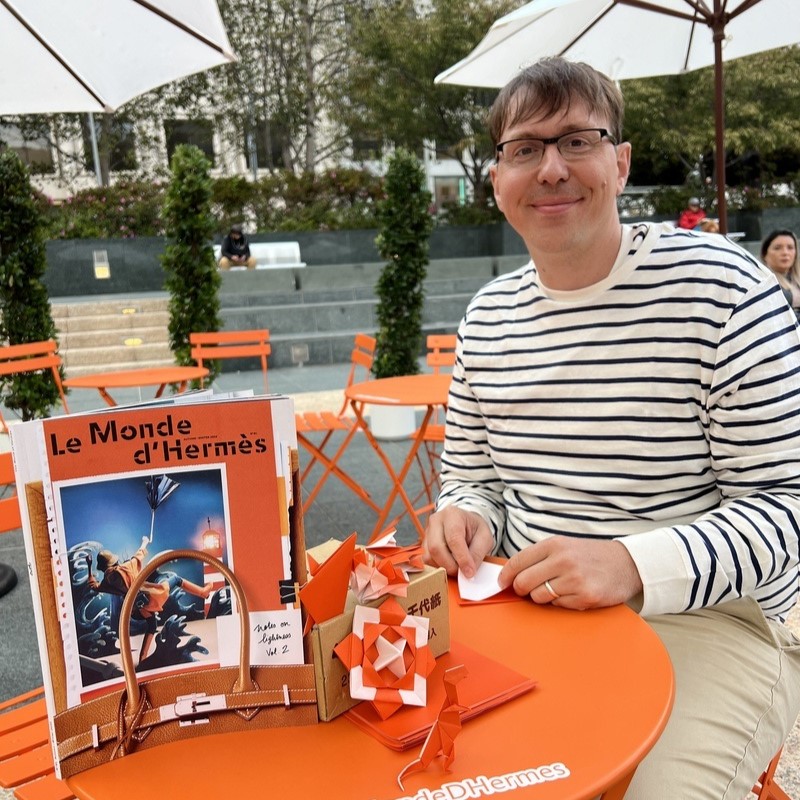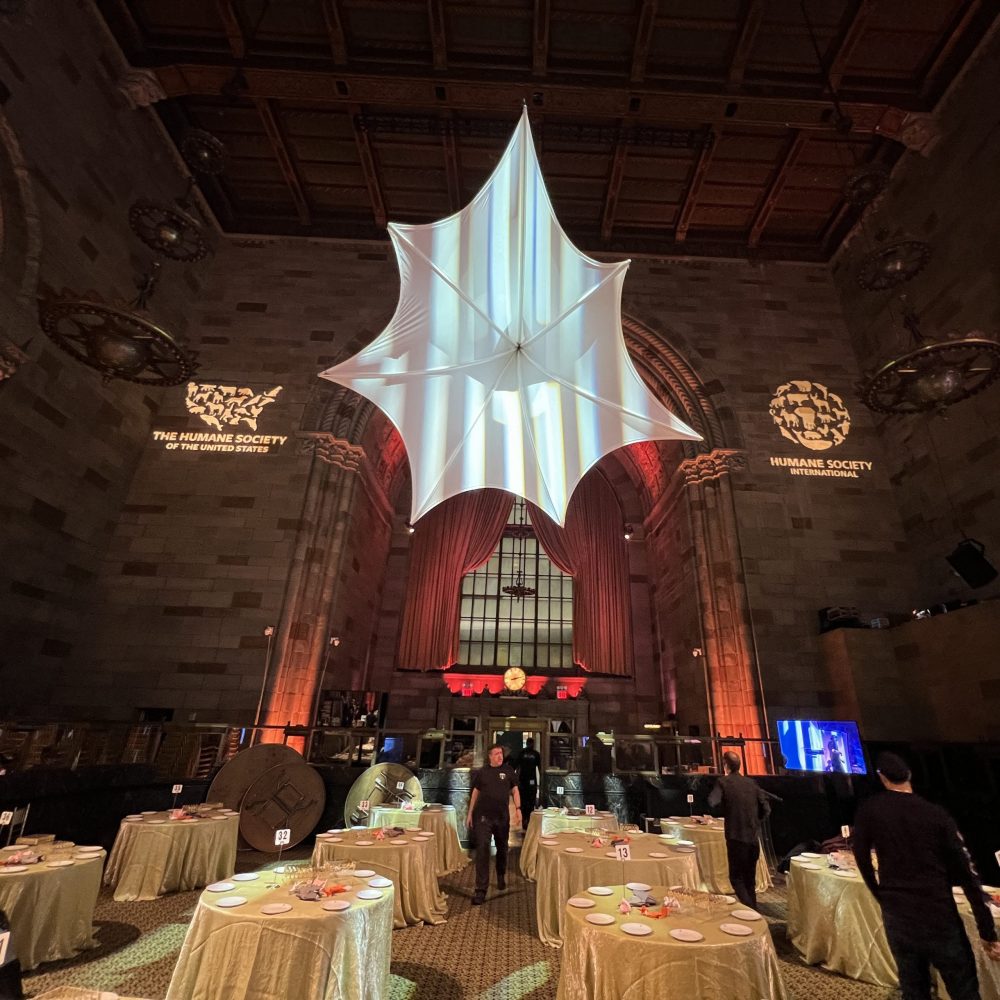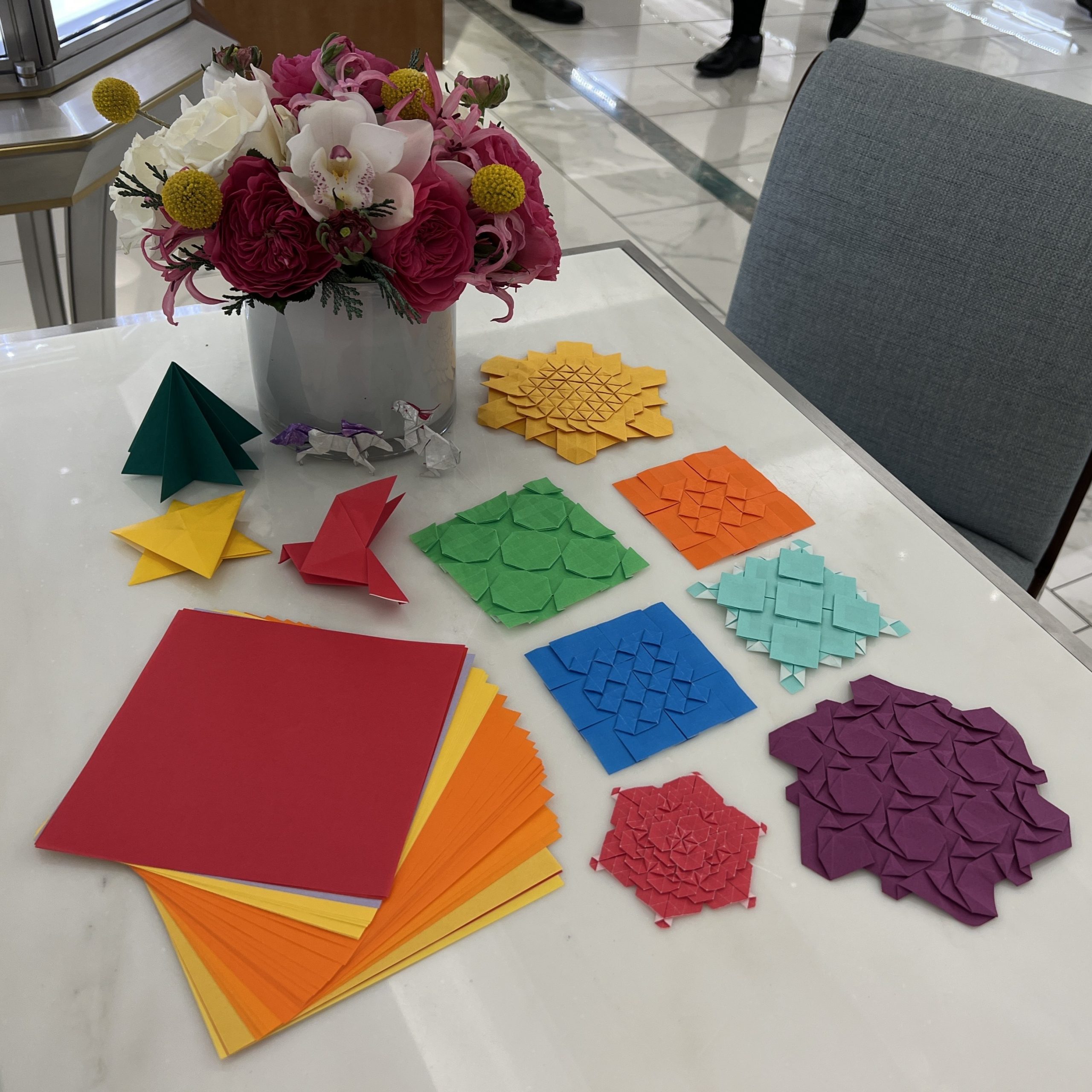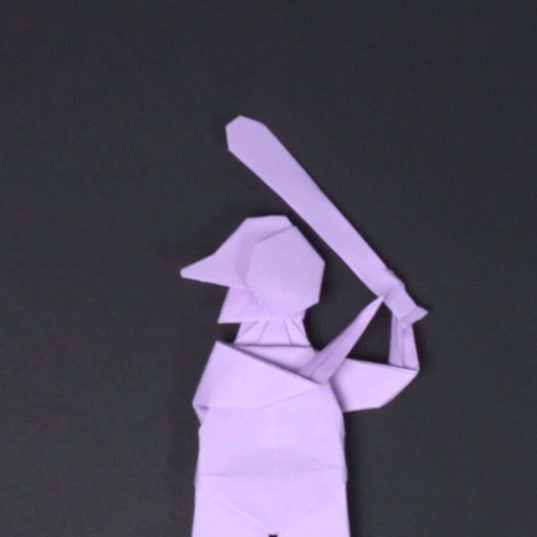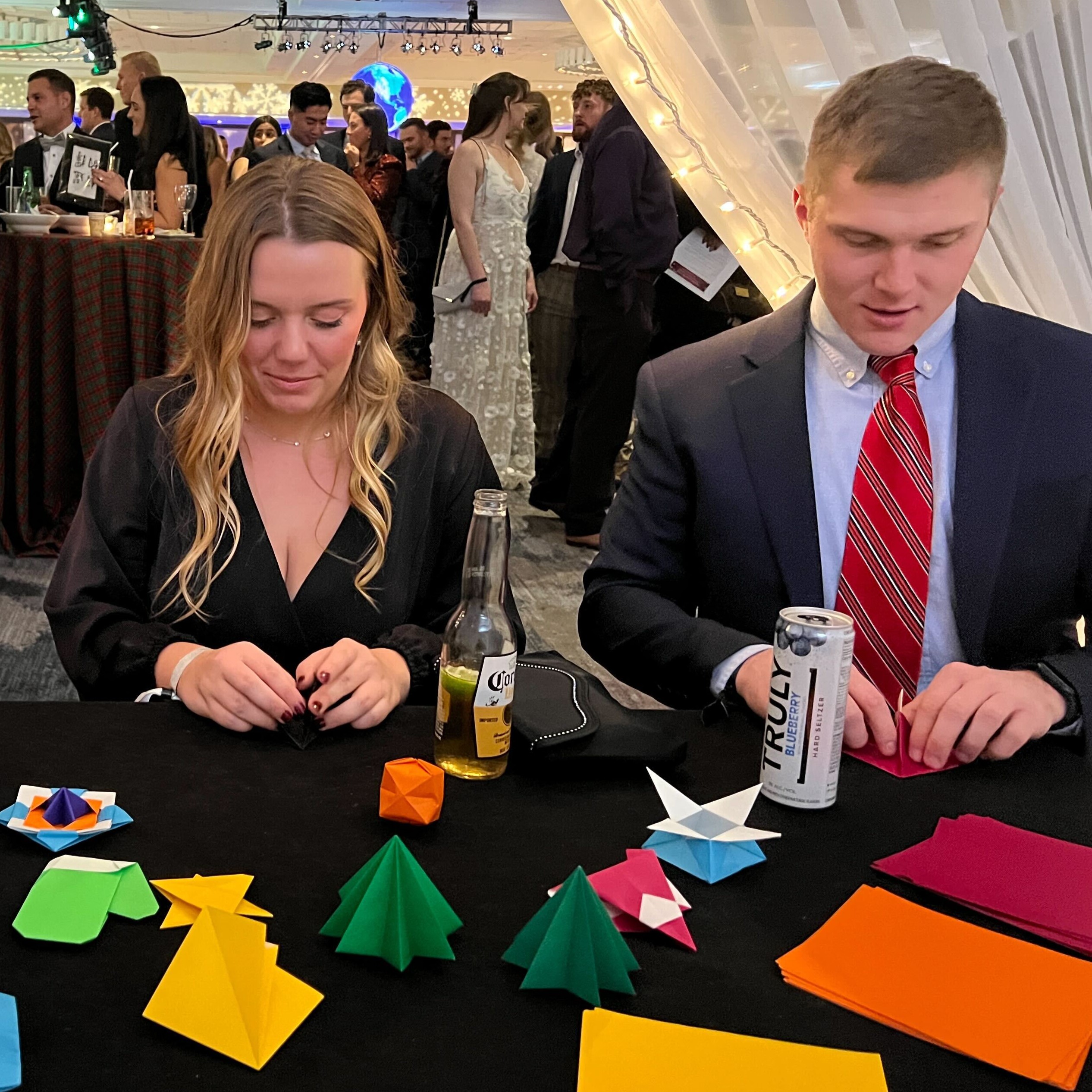It began innocently enough, with a phone call asking for origami paper. Taro’s Origami Studio gets plenty of these, but not a lot that lead to this kind of project. After a brief discussion of various paper types, the studio found out the client was also interested in making 1500 origami elephants- and perhaps a lot more. As a part of the prestigious Cannes Lions Advertising Festival in France, they were also interested in a life-sized origami-like elephant sculpture. And they needed it all in about 3 weeks.
With that, the studio staff headed by Frank Ling on design of the life-sized elephant, and Ben Friesen on production of the 1500 smaller origami models, got to work. First Ben looked into some simple origami elegant designs and found one that would work well for the project.
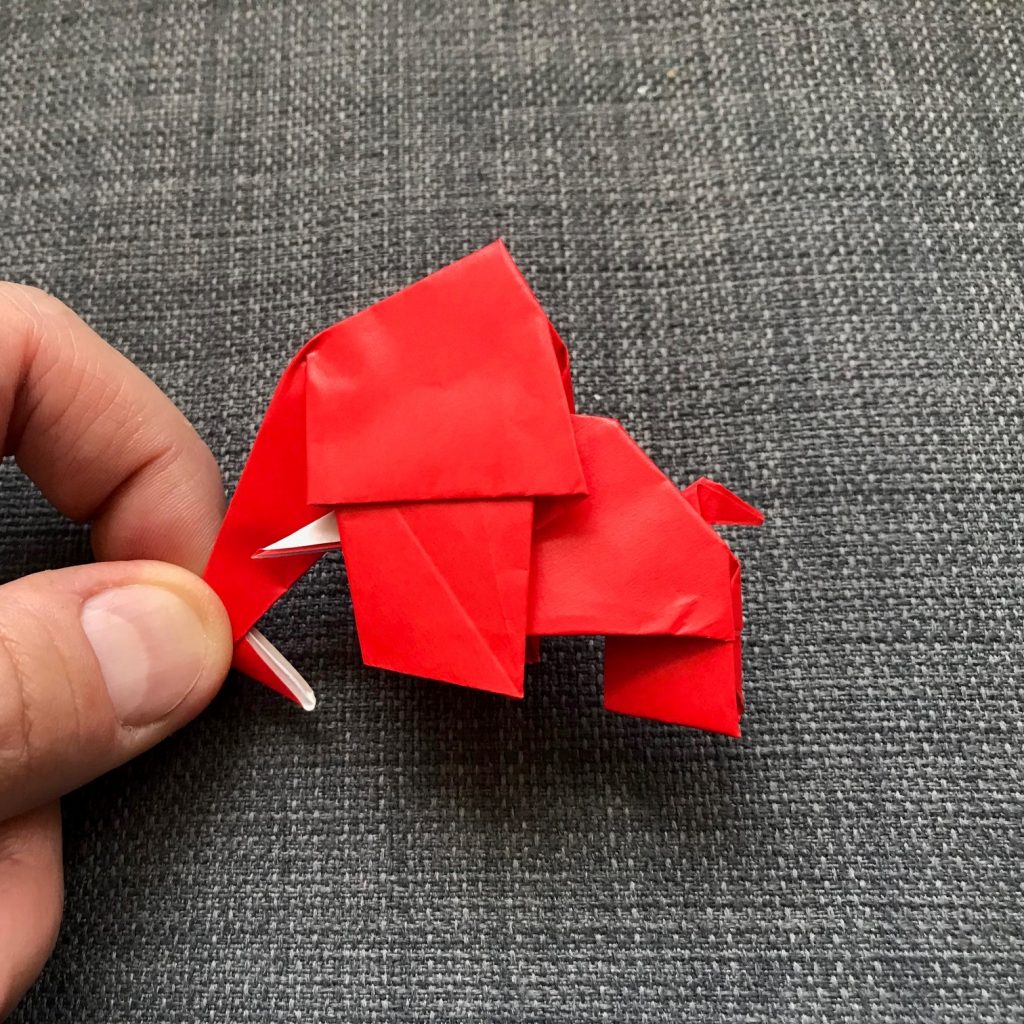
This part of the project had one specific requirement though, and that was that there would be a message folded into the paper, so the model would need to be simple enough to unfold easily. After a few more revisions, the final origami model was chosen.
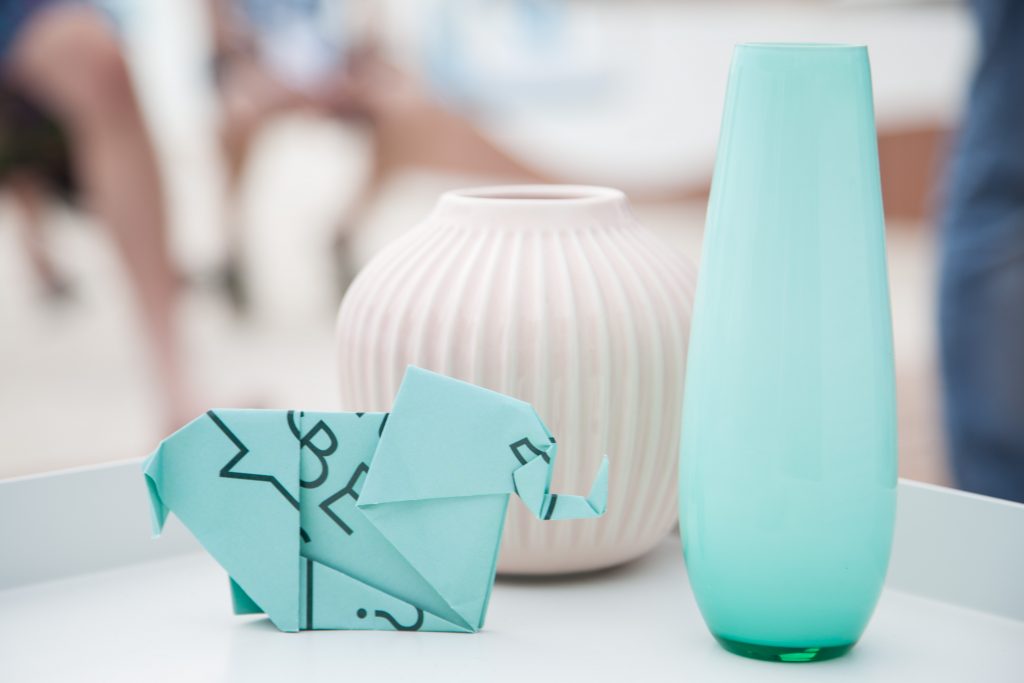
Once the paper was printed and delivered, it was simply a matter of folding non-stop for an entire weekend.
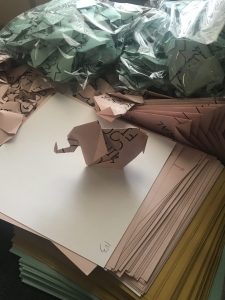
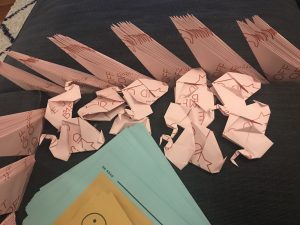
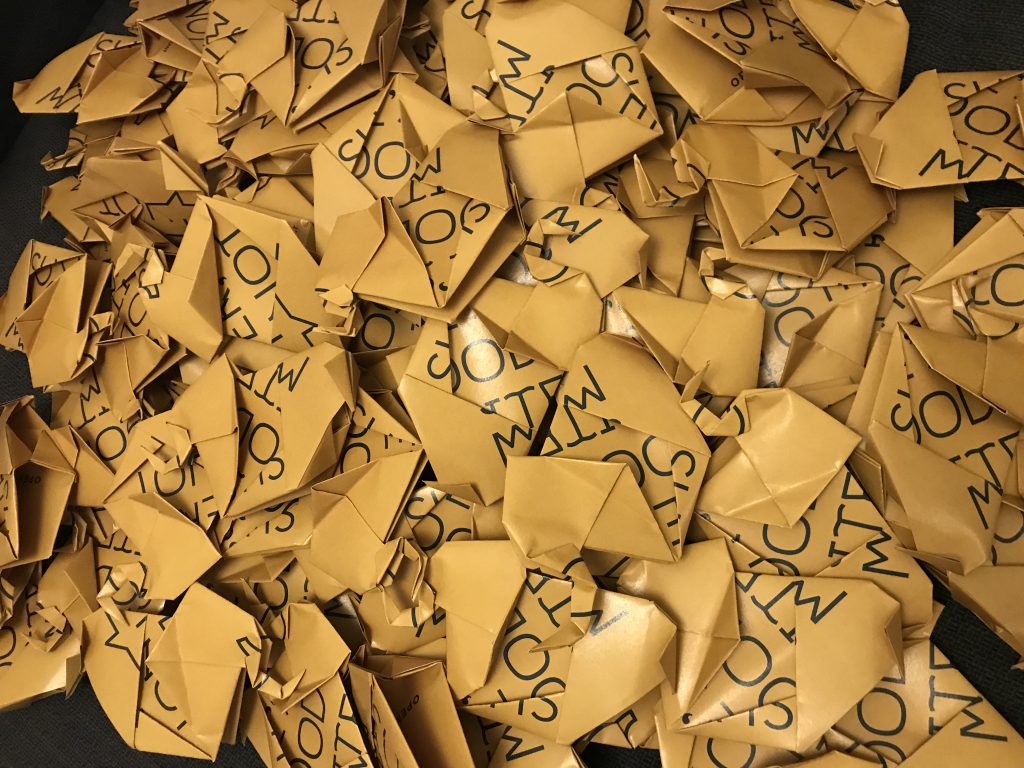
While Ben was taking care of this near the Philly office, Frank was taking that same simple origami elephant model and finding out ways to translate it into a fully sized, standing elephant. Then after more revisions, the model was ramped up in complexity to look for like an elephant and less like origami. Frank was able to make computer renders of the different versions of the model and finally after many rounds of back and forth revisions, and after the final vinyl skin design was chosen, and 4 days before the festival across the Atlantic Ocean, the model was approved and sent off to the printers.
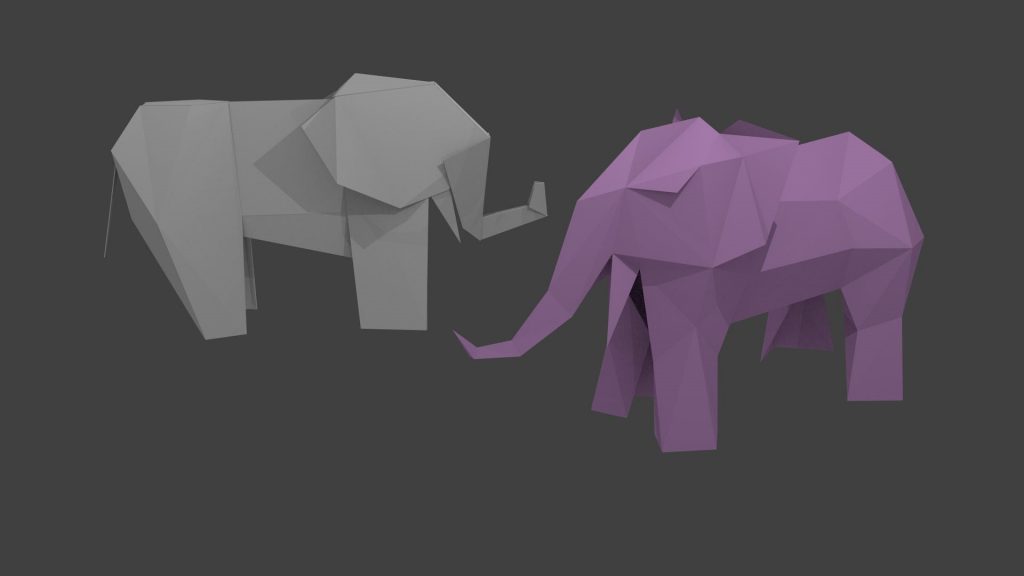
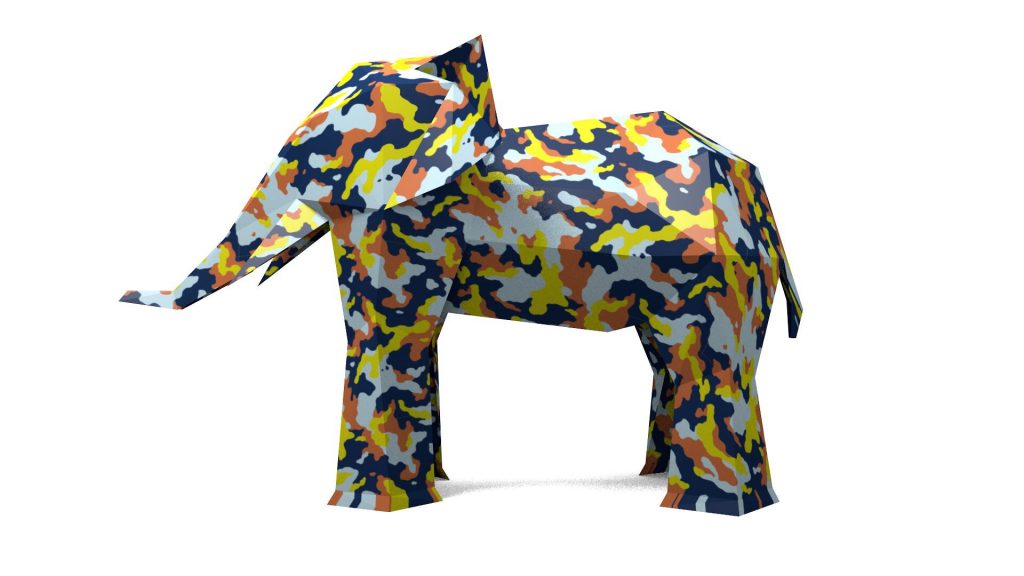
To create this model the studio sent the computer drawn measurements to ta local CNC fabrication house. After that the material for the model needed to be chosen. It needed to be strong enough to support the total weight of the model, but light enough to ship and easily work with. In the end, Frank decided on extra thick polypropene, which is a lot like the material used in political yard signs. Then the custom fabrication house in Brooklyn took the designs and cut out each of the parts of the model. After the parts were cut, Frank and Ben drove them back to the studio for the next phase.
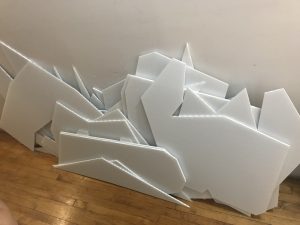
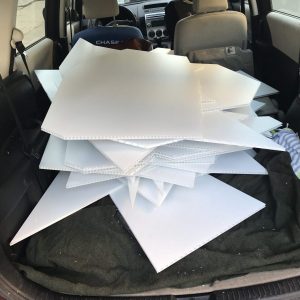
Once the parts all got to the studio, the final crease lines for the parts needed to be created, so they placed everything on the floor of the studio and using the computer instructions as a guide they scored and bent all the crease lines of the parts so that they would fold up as needed for construction.
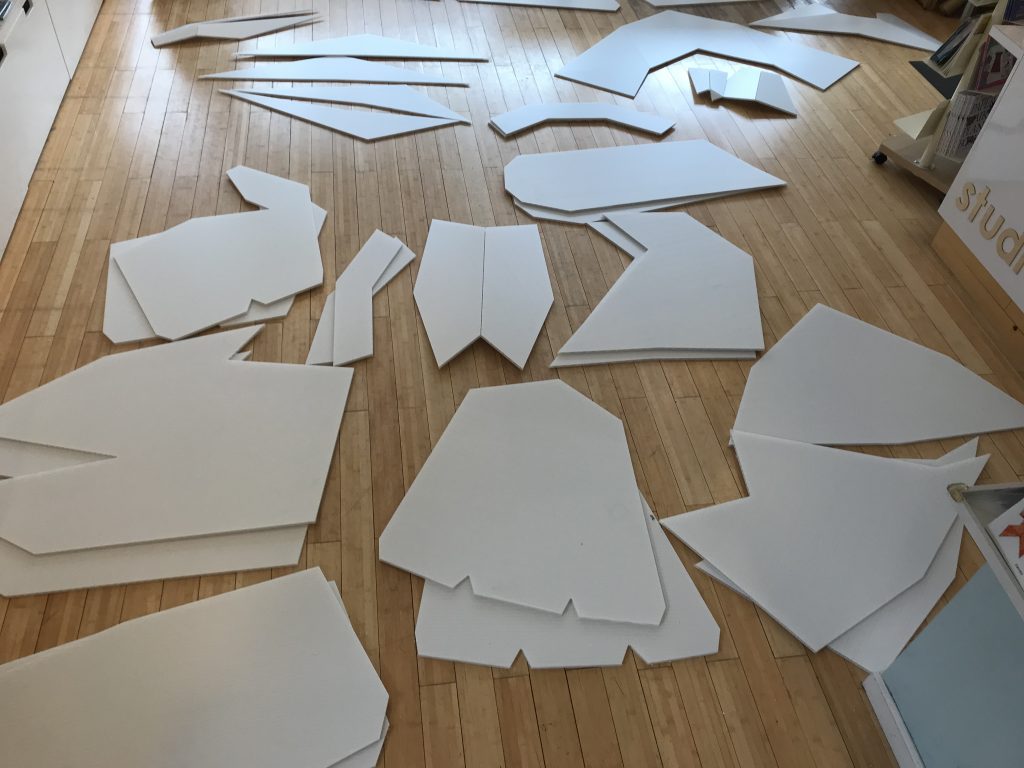
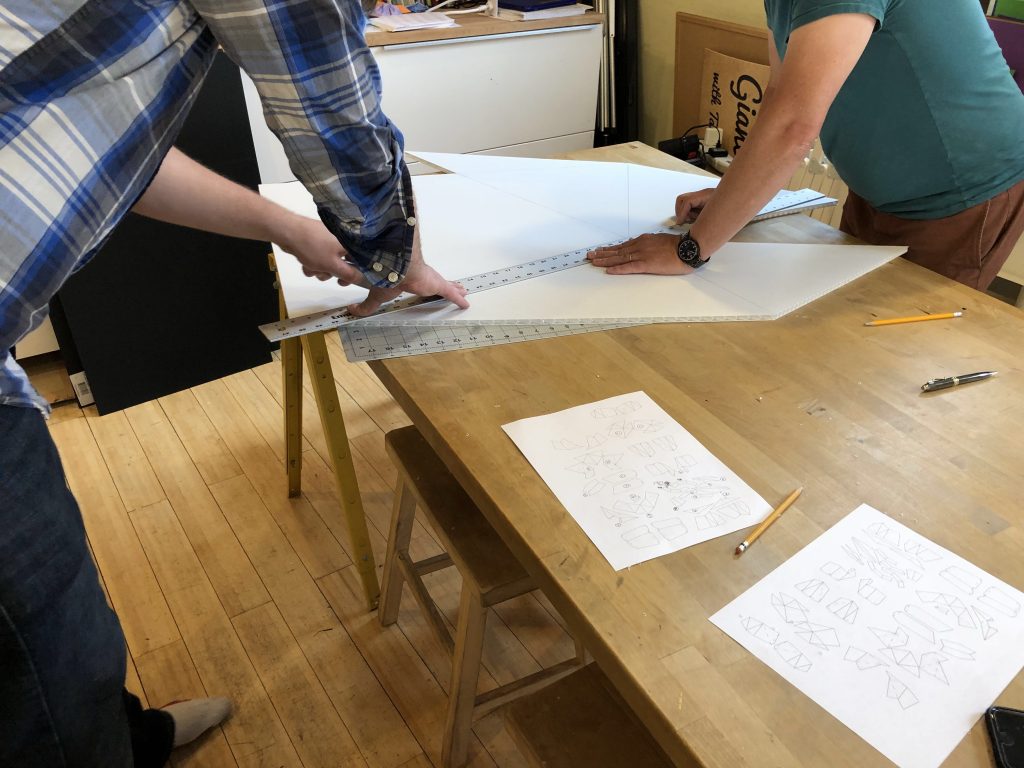
After all the cutting and folding came the craziest game of Tetris you can imagine, trying to get all of the pieces, some of which were over 5 feet wide when flat, folded up so that they could fit into boxes that they could fly to France with. All told Frank and Ben brought 3 bicycle boxes full of pieces, 2 boxes with the 1500 elephants, and a suitcase full of power tools and rivets to attach all the segments.
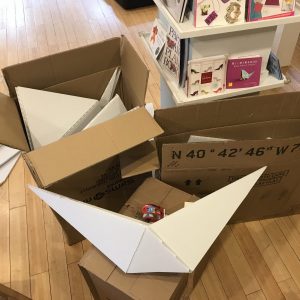
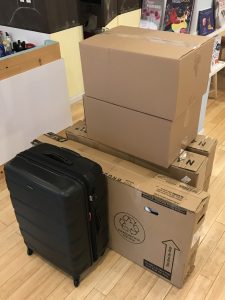
Then it was off to the airport to transport everything and begin the construction process at the historic Casino Barrière in Cannes, France on the French Riviera.
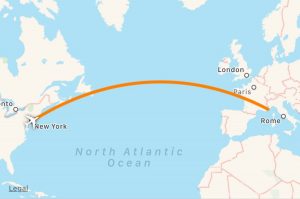
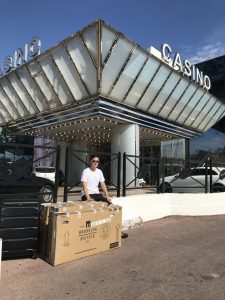
Construction was non-stop. Over the course of the next 3 days and nights, Frank and Ben worked tirelessly through jet-lag to construct the elephant. The first day of the construction process was to create the grooves for mountain folds. Because the material was extra thick for stability, this meant that it could only easily fold in one way (what in origami you refer to as a valley fold, or a fold where the panels of the piece fold towards you) but for the model, they wanted the cuts to be hidden inside the elepahnt where you can’t see them, so the majority of the creases were mountain folds (where the panels bend away from you). This required cutting out gouges on either side of the creases so that the material had enough space to bend that way.
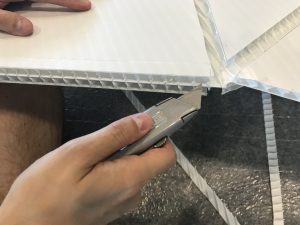
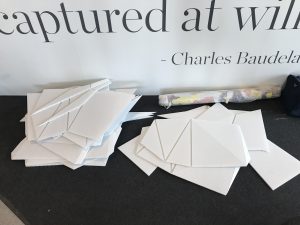
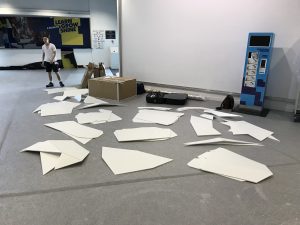
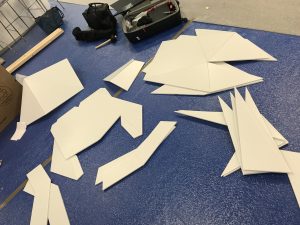
On the second day after all the folds were correctly cut, it was time to cover each of the parts of the model with an adhesive vinyl wrap that that the client had picked out. This in essence trying to get a huge sticker to adhere to the side of a large irregularly shaped panel without any air bubbles. After a little trial and error, help from friends, and very sore knees from working on the ground the process was perfected and all the parts were skinned.
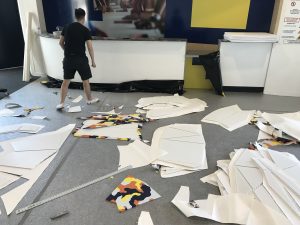
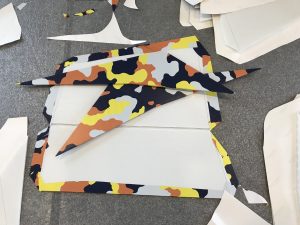
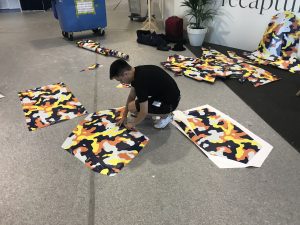
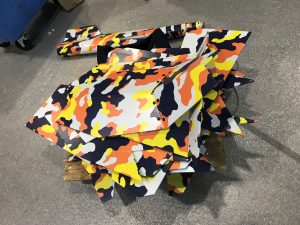
Finally on the last day was assembly.
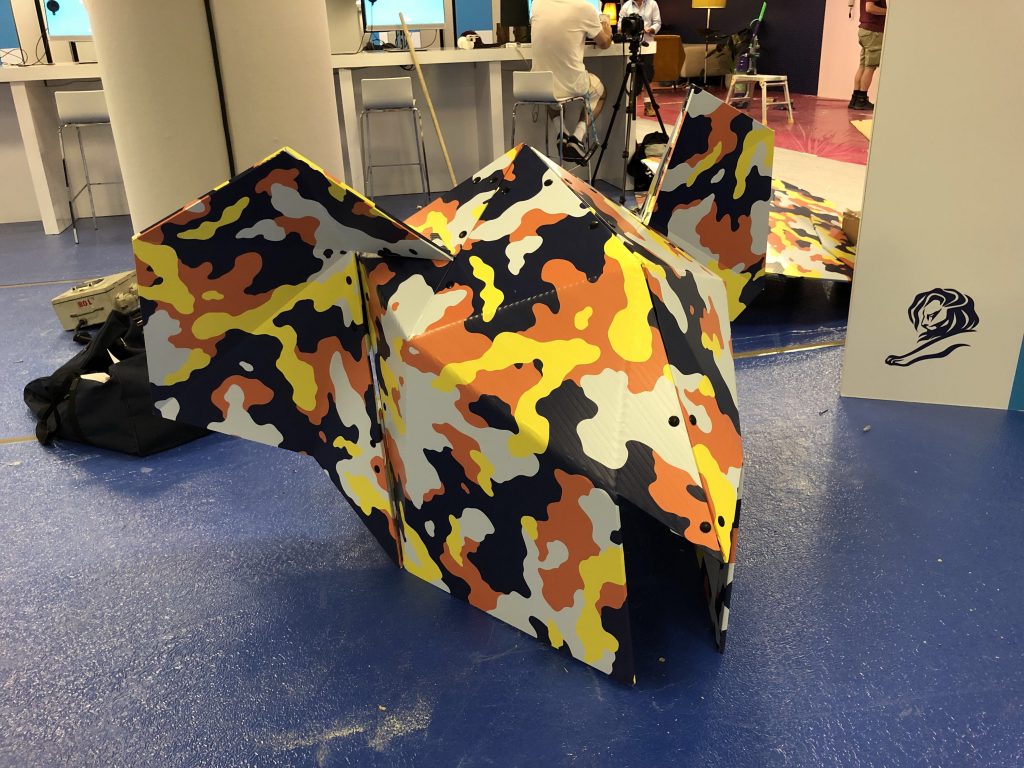
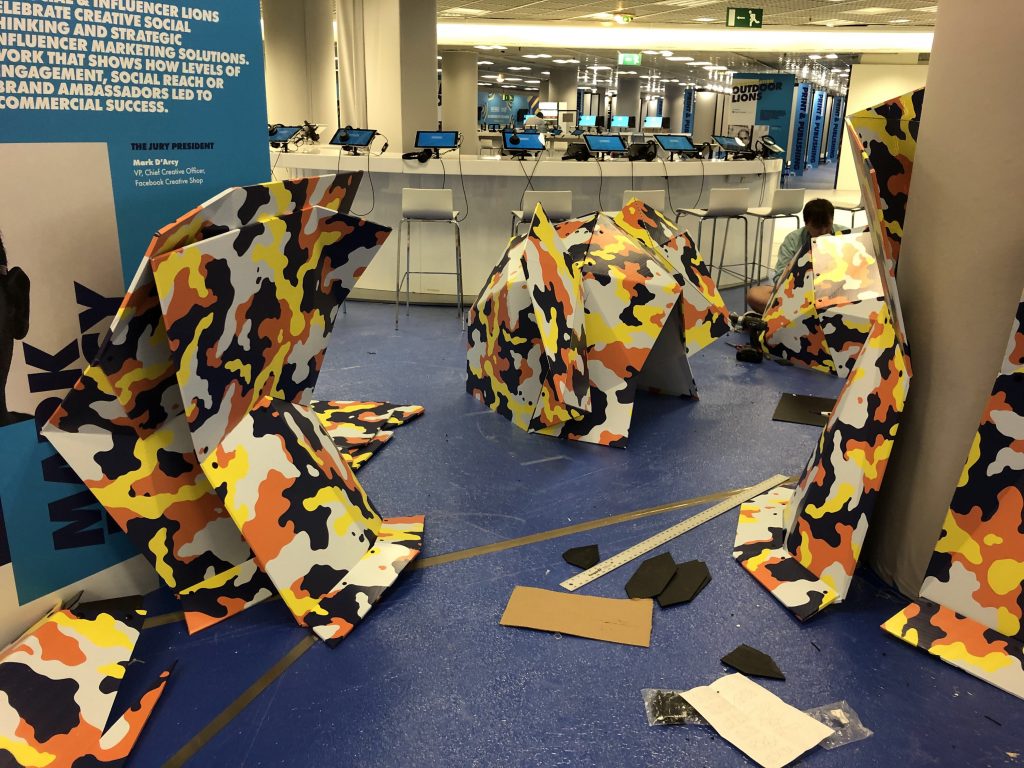
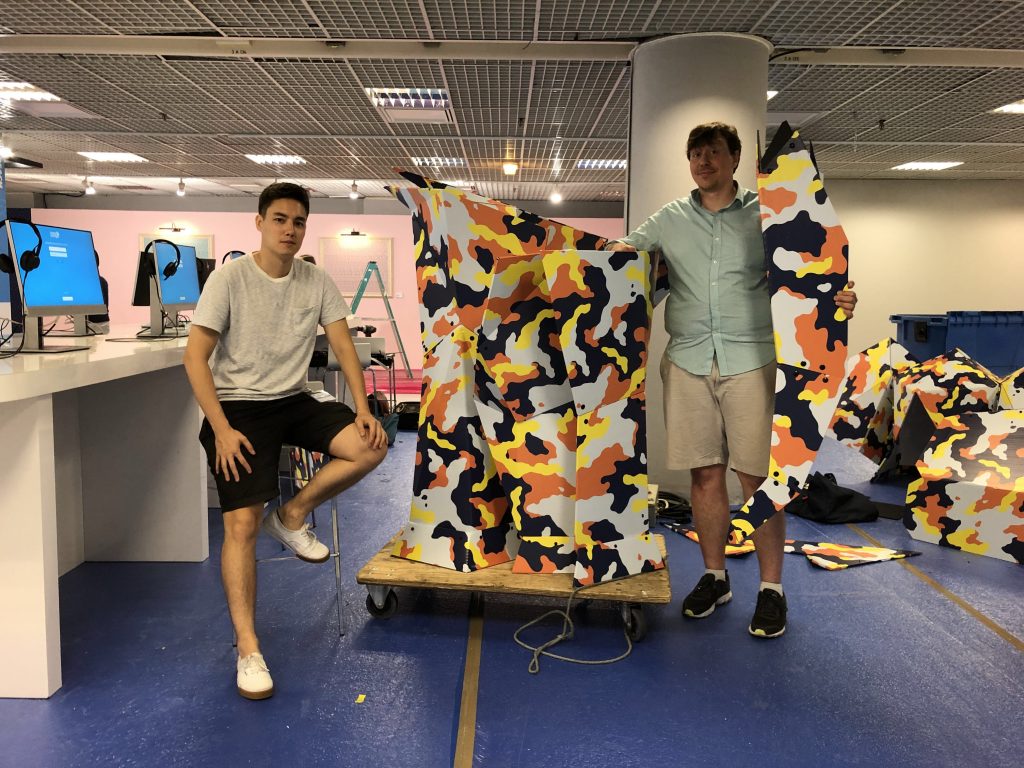
After the largest section of the elephant were completed, Frank and Ben took the parts outside of the convention hall and assembled the elephant in the parking lot so that they had enough space to work on all the sections.
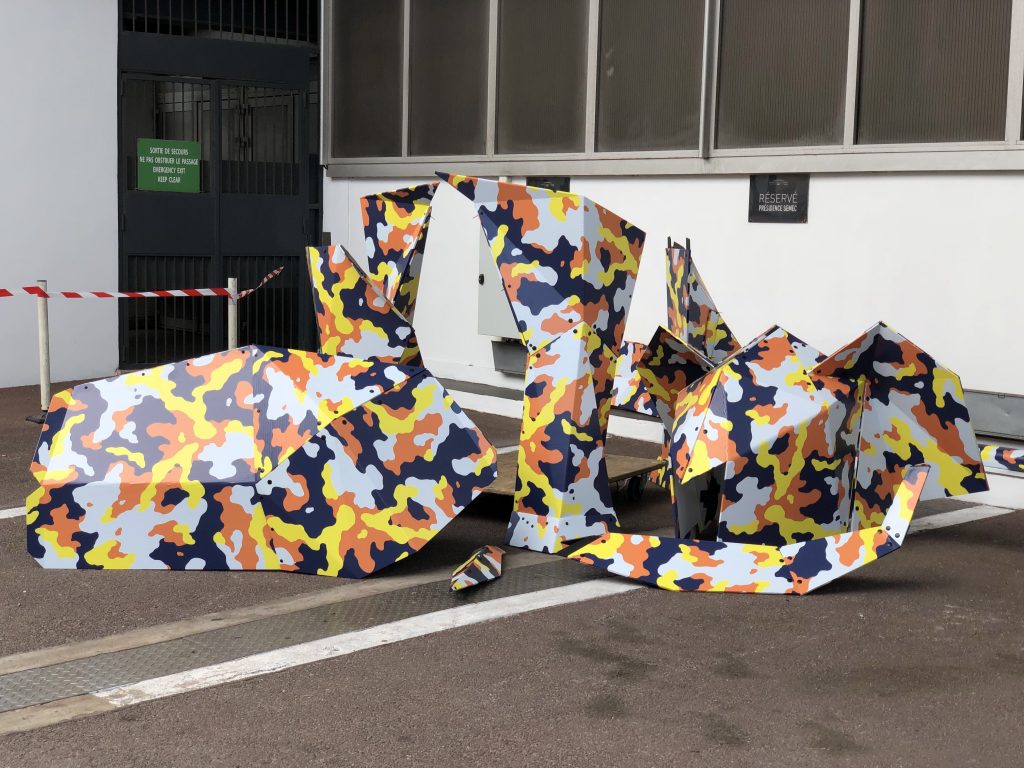
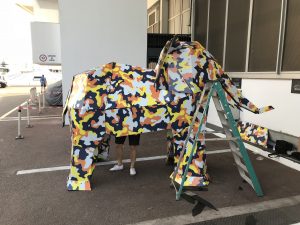
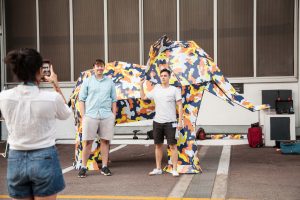
Lastly, they transported the elephant across the street (by carefully picking up and walking inside the model) to its final resting spot in front of the Majestic Barrière Hotel where it stayed for the remainder of the Cannes Lions Festival.
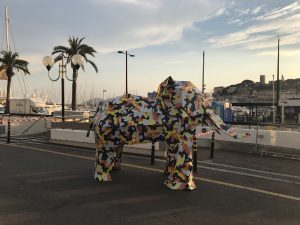
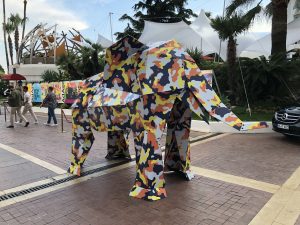
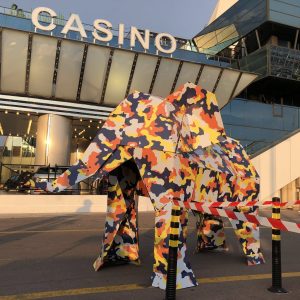
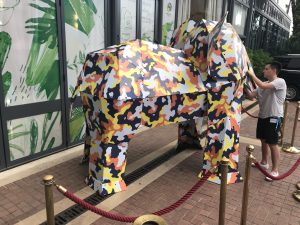

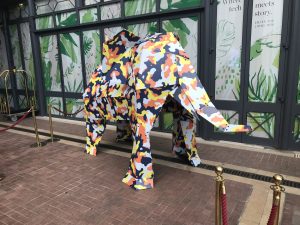
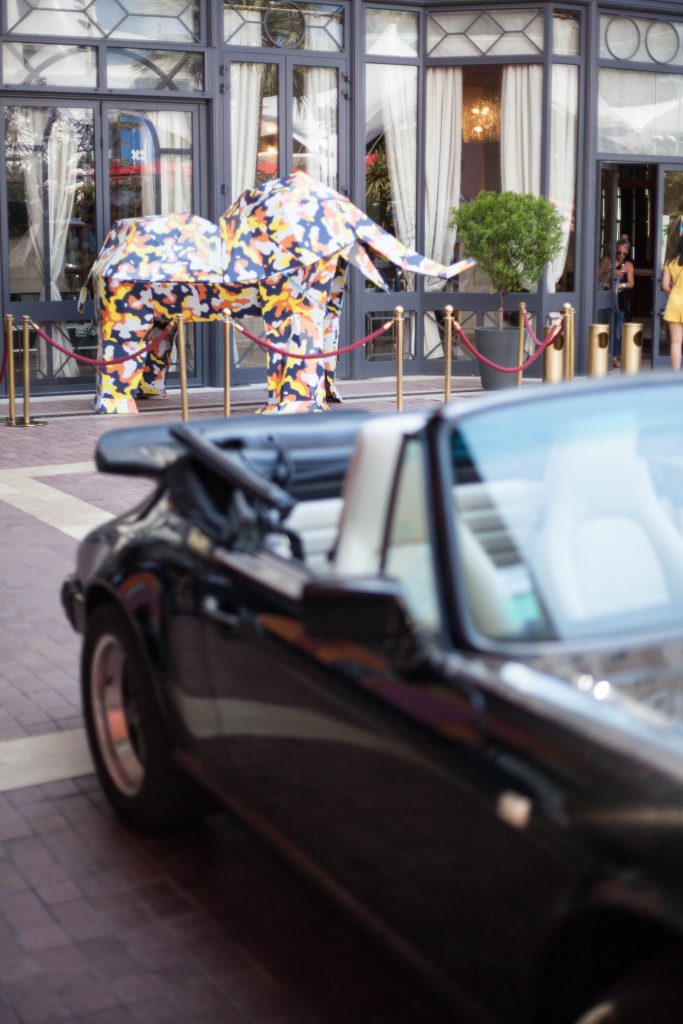
As for the 1,500 origami elephants, they made their way into people’s hotel rooms, onto beaches, and all over the festival to share their message hidden inside.
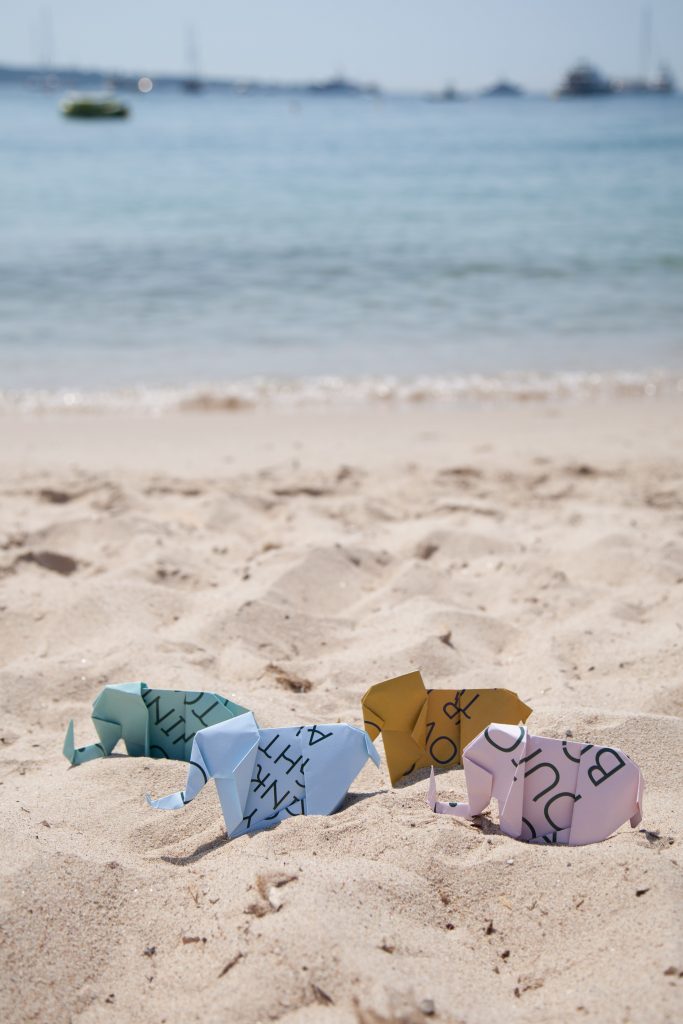
Lastly there was also an amazing videographer from the agency Taro’s worked with on this project and he created this time-lapse of the entire life-sized elephant construction process. Enjoy!
Time-Lapse Video of the Life-Sized Elephant!


